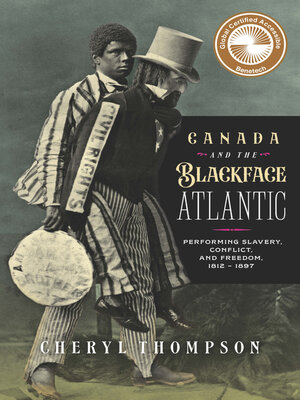Canada and the Blackface Atlantic
ebook ∣ Performing Slavery, Conflict, and Freedom, 1812-1897
By Cheryl Thompson

Sign up to save your library
With an OverDrive account, you can save your favorite libraries for at-a-glance information about availability. Find out more about OverDrive accounts.
Find this title in Libby, the library reading app by OverDrive.



Search for a digital library with this title
Title found at these libraries:
| Library Name | Distance |
|---|---|
| Loading... |
Canada and the Blackface Atlantic traces the origins of theatre, dance, and concert singing in Canada and their connection to British and American song and dance traditions.
When theatrical acts first appeared in the late eighteenth century, chattel slavery had transformed into mass entertainment on minstrel stages across the Atlantic world. As railroads and theatres were built, local blackface troupes emerged alongside touring British and American acts. By the 1850s, blackface theatre could be found in remote Western outposts to stages in Central and Maritime Canada. This is one of the first books to connect the rise of Canadian blackface minstrelsy with the emergence of Black singers, and choral groups. It describes how Black performers who assumed minstrelsy's mask remapped plantation slavery on Canadian stages.
It begins with the conflicts that shaped North America – the American Revolutionary War, and the War of 1812. Next, it connects these origins with eighteenth-century British immigration, which brought folk dances and masking traditions to North America. From there, it unmasks when and how "Jim Crow" became an Atlantic world sensation, which set the stage for blackface to expand. Finally, it considers how Black acts reimagined the parameters of their own freedom.







